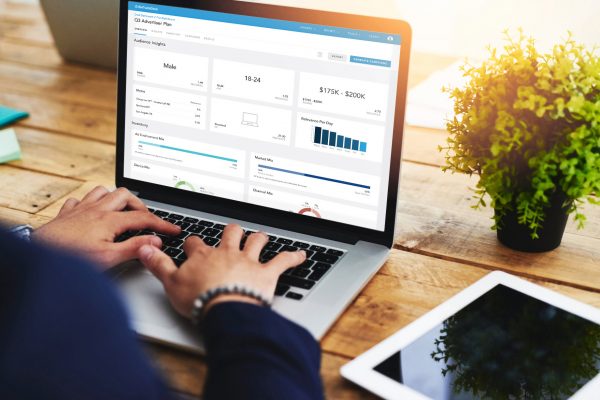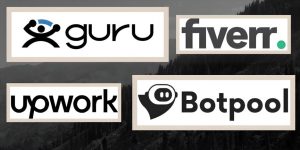
In today’s digital landscape, building your own advertising platform can be a game-changer for your business. Whether you’re aiming to gain more control over your ad inventory, streamline monetization, or deliver highly targeted campaigns, creating a custom solution requires a solid understanding of both the technical underpinnings and budgetary considerations. In this comprehensive guide, we’ll explore the essential steps, technical architecture, and cost breakdowns you need to build a robust advertising platform.
1. Define Your Objectives and Strategy
Before you write a single line of code, it’s critical to establish clear objectives. Consider the following questions:
- What is the primary purpose?
Are you targeting display ads, mobile ads, video, or a combination of formats? - Who is your target audience?
Define your buyer personas, advertisers, and publishers to align platform features with market needs. - Which advertising model will you adopt?
Options include cost-per-click (CPC), cost-per-impression (CPM), or cost-per-acquisition (CPA). Deciding early on helps determine technical and financial requirements. - How will your platform differentiate itself?
Focus on unique selling points such as advanced targeting, real-time bidding (RTB) technology, or comprehensive analytics.
Developing a detailed strategy will guide your technical decisions and inform your budget estimates. A clearly defined roadmap not only streamlines development but also makes it easier to secure investment or allocate internal resources.
2. Building the Technical Architecture
Creating a scalable and efficient advertising platform requires careful planning of the underlying technical architecture. Here are the key components to consider:
2.1. Core Components
- Ad Server:
The backbone of your platform, the ad server, is responsible for delivering ads in real time. It needs to handle ad requests, rotate creatives, and track performance metrics accurately. - Real-Time Bidding (RTB) Engine:
Integrate an RTB mechanism if you plan to participate in programmatic advertising. This involves complex algorithms that evaluate bids in milliseconds, ensuring that the highest bidder wins the ad slot without compromising user experience. - Demand-Side Platform (DSP) and Supply-Side Platform (SSP) Integration:
Your platform should either include built-in DSP/SSP capabilities or integrate seamlessly with third-party services. This integration is crucial for connecting advertisers with available inventory. - Analytics and Reporting Module:
Robust analytics is non-negotiable. Implement a comprehensive reporting system that tracks impressions, clicks, conversions, and revenue. Consider integrating machine learning models to optimize ad placements based on historical data.
2.2. Technology Stack Considerations
- Backend Technologies:
Opt for scalable server-side languages like Node.js, Python, or Java. Microservices architecture can be beneficial, allowing you to isolate services (e.g., bidding engine, analytics, ad serving) and scale them independently. - Frontend Development:
Use modern frameworks such as React or Angular to build a responsive user interface that is both intuitive and fast. A well-designed dashboard is essential for real-time monitoring and campaign management. - Database Solutions:
High-speed transactional databases like PostgreSQL or MySQL should be used in tandem with NoSQL options (e.g., MongoDB, Redis) for caching and handling large-scale data operations. - Cloud Infrastructure:
Leverage cloud platforms like Amazon Web Services (AWS), Google Cloud Platform (GCP), or Microsoft Azure. Cloud hosting offers scalability, security, and flexible pricing models, which are ideal for dynamic ad serving environments.
2.3. API Integrations

To maximize functionality, your platform should support APIs for:
- Third-Party Data Providers:
Enhance targeting capabilities by integrating data from external sources. - Payment Gateways:
Secure and seamless payment integration is vital for financial transactions, ad invoicing, and budget management. - Ad Creative Management:
APIs that allow advertisers to upload, manage, and test multiple ad creatives can significantly enhance user experience.
2.4. Security and Compliance
Data security and regulatory compliance (e.g., GDPR, CCPA) are paramount. Implement robust encryption protocols, secure authentication, and regular security audits. This not only protects your platform but also builds trust with advertisers and publishers.
3. Budgeting for Your Advertising Platform
Creating an in-house advertising platform is an investment that can range widely based on complexity and scale. Here’s a breakdown of potential budget considerations:
3.1. Initial Development Costs
- MVP (Minimum Viable Product):
A basic platform with essential features might cost between $50,000 to $150,000. This budget typically covers core functionality, basic UI/UX, and fundamental API integrations. - Full-Featured Platform:
For a comprehensive solution featuring advanced RTB, integrated DSP/SSP modules, and sophisticated analytics, expect a budget in the range of $250,000 to $500,000 or more. This range covers custom software development, high-end infrastructure, and robust security protocols.
3.2. Operational Costs
- Cloud Hosting and Infrastructure:
Costs vary with user traffic and data volume. For a medium-scale operation, monthly hosting expenses might range from $2,000 to $10,000. This includes server instances, storage, and content delivery network (CDN) services. - Maintenance and Updates:
Budget for continuous improvements, security patches, and feature enhancements. Annual maintenance costs can account for 15-20% of your initial development budget. - Staffing:
Hiring skilled developers, data scientists, UX/UI designers, and digital marketing experts is essential. Staffing expenses could be your most significant recurring cost. Ensure that your budget reflects competitive salaries in your region or for remote talent.
3.3. Marketing and Client Acquisition
- Platform Promotion:
Once launched, allocate funds for SEO, content marketing, and possibly paid advertising to attract early adopters. Initial marketing budgets may range from $10,000 to $50,000, depending on your target market and competition. - Customer Support and Training:
A well-supported platform enhances retention. Budget for customer service tools, training materials, and dedicated support staff.
3.4. Contingency Planning
- Unexpected Costs:
Always include a contingency fund (typically 10-20% of the overall budget) to manage unforeseen technical challenges, regulatory changes, or additional feature requests.
4. Essential Features and Technologies
Building a competitive advertising platform means incorporating key features that cater to both advertisers and publishers. Here are the must-haves:
4.1. Advanced Targeting Capabilities
- Behavioral and Contextual Targeting:
Use AI and machine learning algorithms to analyze user behavior, context, and demographics. This enables precise ad placements and improved campaign performance. - Geo-Targeting:
Integrate location-based targeting to reach users based on their physical location, which can be especially effective for local businesses.
4.2. Real-Time Analytics and Reporting
- Dashboards and Visualization Tools:
Real-time dashboards empower users with immediate insights. Offer customizable reporting features that allow advertisers to monitor key metrics such as CTR, conversion rates, and ROI. - Predictive Analytics:
Leverage historical data and machine learning models to forecast campaign outcomes and optimize bidding strategies.
4.3. Seamless User Experience
- Responsive Design:
Ensure that both advertisers and publishers can access and manage campaigns on any device. A seamless user experience translates into higher engagement and better conversion rates. - Self-Service Features:
Provide tools that allow users to create, modify, and track campaigns without needing constant technical support. This reduces overhead and accelerates campaign deployment.
4.4. Scalability and Performance
- Load Balancing and Auto-Scaling:
To handle traffic spikes, implement load balancing across servers and auto-scaling mechanisms within your cloud infrastructure. - Latency Optimization:
Given that advertising platforms often operate in real time, minimizing latency is critical. Optimize code, use CDNs, and deploy edge computing solutions to ensure fast ad delivery.
5. Testing, Launch, and Future Scalability
5.1. Rigorous Testing
Before going live, comprehensive testing is essential:
- Alpha and Beta Testing:
Roll out the platform in stages to identify and fix bugs. Invite a select group of advertisers and publishers to provide feedback on functionality and usability. - Security and Compliance Audits:
Engage third-party security experts to audit your platform. This ensures that your platform adheres to all regulatory requirements and industry best practices.
5.2. Launch Strategy
- Soft Launch:
A soft launch allows you to gradually introduce the platform to the market, reducing risk and enabling iterative improvements. - Marketing and PR:
Combine SEO, content marketing, social media, and targeted advertising campaigns to generate buzz. Thought leadership articles, case studies, and webinars can position your platform as an industry innovator.
5.3. Scaling Your Platform
- Modular Architecture:
A modular design facilitates the addition of new features as your user base grows. Plan for future integrations and technology updates from the onset. - Data-Driven Decision Making:
Use analytics to continuously monitor performance and user behavior. Regularly update algorithms to ensure your platform remains competitive and efficient. - International Expansion:
Consider localization and multi-currency support if you plan to scale internationally. This includes language support, regional compliance, and tailored marketing strategies.
6. Conclusion
Creating your own advertising platform is an ambitious yet rewarding endeavor that can offer unmatched control over your ad inventory and revenue streams. By clearly defining your objectives, investing in a robust technical architecture, and planning for scalable growth, you can build a platform that not only meets today’s digital advertising challenges but is also prepared for tomorrow’s innovations.
Remember, success lies in the details—from integrating a real-time bidding engine to ensuring your platform adheres to strict security and compliance standards. Budget wisely, plan for contingencies, and continuously iterate based on user feedback and data insights. With careful planning and execution, your advertising platform can become a pivotal tool in your digital strategy, setting you apart in a competitive market.
Whether you are a seasoned advertising specialist or a tech entrepreneur venturing into programmatic advertising, the journey requires a blend of technical expertise, strategic planning, and financial prudence. Embrace the challenge, and your platform could soon be the go-to solution for advertisers and publishers alike.







